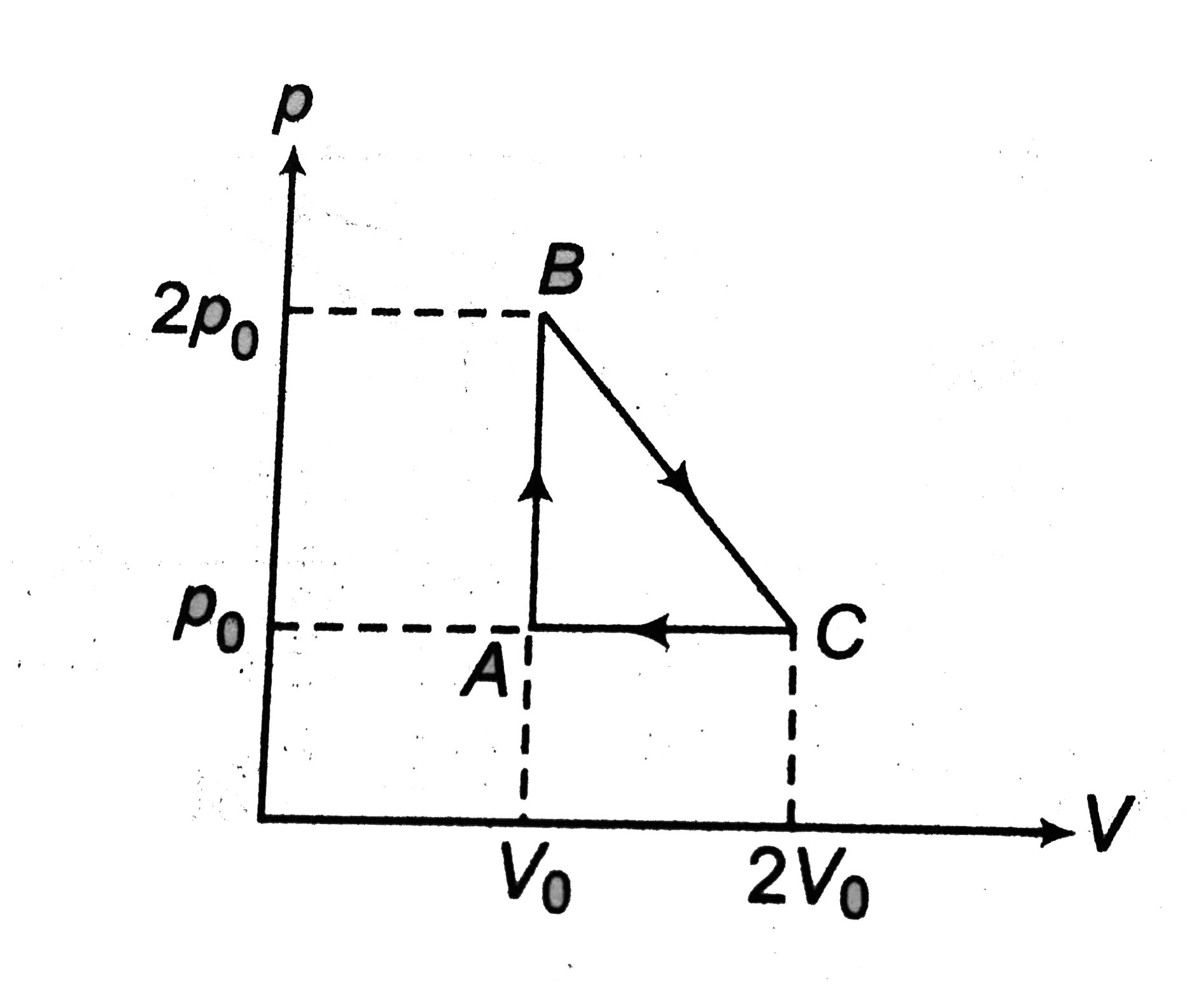How much kinetic energy will be gained by an α−particle in going from a point at 70V to another point at 50V
40 eV
40 keV
40 MeV
0 eV
The correct Answer is:A
To find the kinetic energy gained by an alpha particle when it moves from a point at 70 V to another point at 50 V, we can follow these steps:
Step 1: Understand the concept of electric potential and kinetic energy
The kinetic energy gained by a charged particle moving through an electric potential difference can be calculated using the formula:
K.E.=q⋅ΔV
where:
- K.E. is the kinetic energy,
- q is the charge of the particle,
- ΔV is the change in electric potential.
Step 2: Identify the charge of the alpha particle
An alpha particle consists of 2 protons and 2 neutrons. Therefore, its charge q is:
q=2e
where e (the elementary charge) is approximately 1.6×10−19C. Thus,
q=2×1.6×10−19C=3.2×10−19C
Step 3: Calculate the change in electric potential
The change in electric potential ΔV as the alpha particle moves from 70 V to 50 V is:
ΔV=Vfinal−Vinitial=50V−70V=−20V
Step 4: Substitute values into the kinetic energy formula
Now, we can substitute the values into the kinetic energy formula:
K.E.=q⋅ΔV=(2e)⋅(70V−50V)
K.E.=(2×1.6×10−19C)⋅(20V)
Step 5: Calculate the kinetic energy
Calculating this gives:
K.E.=3.2×10−19C⋅20V=6.4×10−18J
Step 6: Convert to electron volts
Since the question asks for the answer in electron volts (eV), we can convert joules to electron volts using the conversion factor 1eV=1.6×10−19J:
K.E.=6.4×10−18J1.6×10−19J/eV=40eV
Final Answer
The kinetic energy gained by the alpha particle is:
K.E.=40eV
---
The kinetic energy gained by a charged particle moving through an electric potential difference can be calculated using the formula:
K.E.=q⋅ΔV
where:
- K.E. is the kinetic energy,
- q is the charge of the particle,
- ΔV is the change in electric potential.
An alpha particle consists of 2 protons and 2 neutrons. Therefore, its charge q is:
q=2e
where e (the elementary charge) is approximately 1.6×10−19C. Thus,
q=2×1.6×10−19C=3.2×10−19C
The change in electric potential ΔV as the alpha particle moves from 70 V to 50 V is:
ΔV=Vfinal−Vinitial=50V−70V=−20V
Now, we can substitute the values into the kinetic energy formula:
K.E.=q⋅ΔV=(2e)⋅(70V−50V)
K.E.=(2×1.6×10−19C)⋅(20V)
Calculating this gives:
K.E.=3.2×10−19C⋅20V=6.4×10−18J
Since the question asks for the answer in electron volts (eV), we can convert joules to electron volts using the conversion factor 1eV=1.6×10−19J:
K.E.=6.4×10−18J1.6×10−19J/eV=40eV
The kinetic energy gained by the alpha particle is:
K.E.=40eV
Topper's Solved these Questions
- ELECTROSTATIC POTENTIAL AND CAPACITORSBOOK - DC PANDEY ENGLISHCHAPTER - ELECTROSTATIC POTENTIAL AND CAPACITORSEXERCISE - (B) Chapter exercises
17 Videos
- ELECTROSTATIC POTENTIAL AND CAPACITORSBOOK - DC PANDEY ENGLISHCHAPTER - ELECTROSTATIC POTENTIAL AND CAPACITORSEXERCISE - (C) Chapter exercises
50 Videos
- ELECTROSTATIC POTENTIAL AND CAPACITORSBOOK - DC PANDEY ENGLISHCHAPTER - ELECTROSTATIC POTENTIAL AND CAPACITORSEXERCISE - Check point 2.5
20 Videos
- ELECTROMAGNETIC WAVESBOOK - DC PANDEY ENGLISHCHAPTER - ELECTROMAGNETIC WAVESEXERCISE - Sec C
22 Videos
- ELECTROSTATICSBOOK - DC PANDEY ENGLISHCHAPTER - ELECTROSTATICSEXERCISE - Medical entrances gallery
37 Videos
Similar Questions
The kinetc energy of a chargd particle decreased by 10 J as it moves from a point at potential 100 V to a point at potential 200V . Find the charge on the particle.
View SolutionHow much energy is gained directly during glycolysis from one molecular of glucose ?
View SolutionIf 20J of work has to be done to move an electric charge of 4C from a point, where potential is 10V to another point, where potential is V volt, find the value of V.
View SolutionThe potential energy of a particle is determined by the expression U=α(x2+y2), where α is a positive constant. The particle begins to move from a point with coordinates (3,3), only under the action of potential field force. Then its kinetic energy T at the instant when the particle is at a point with the coordinates (1,1) is
View SolutionIn the process shown in figure, the internal energy of and ideal gas decreases by 3p0V02 in going from point C to A. Heat transfer along the process CA is

View SolutionIn one experiment , a proton having kinetic energy of 1 eV is accelerated through a potential difference of 3 V. In another experiment, an α-particle having initial kinetic energy 20 eV is retarded by a potential difference of 2 V. Calculate the ratio of de-Broglie wavelengths of proton and α - particle.
View SolutionA 900 pF capacitor is charged by 100V battery.
(a) How much electrostatic energy is strored by the capacitor ? The capacitor is disconnected from the battery and connected to another 900 pF capacitor. How much is the electrostatic energy stored in the system ?
View SolutionA 12 pF capacitor is connected to a 50 V battery. How much electrostatic energy is stored in the capacitor ? If another capacitor of 6 pF is connected across the combination, find the charge stored and potential difference across each capacitor.
View SolutionIn the figure masses 400kg and 100kg are fixed.

(a) How much work must be done to move a 1kg mass from point A to point B?
(b) What is the minimum kinetic energy with which the 1kg mass must be projected from A to the right to reach the point B?
View SolutionA particle is moving in a circle with uniform speed v . In moving from a point to another diametrically opposite point
View Solution
